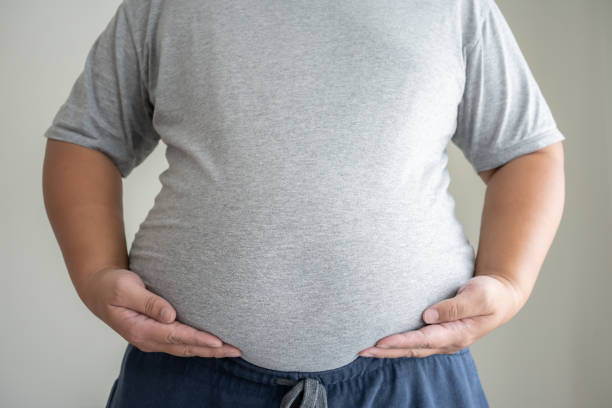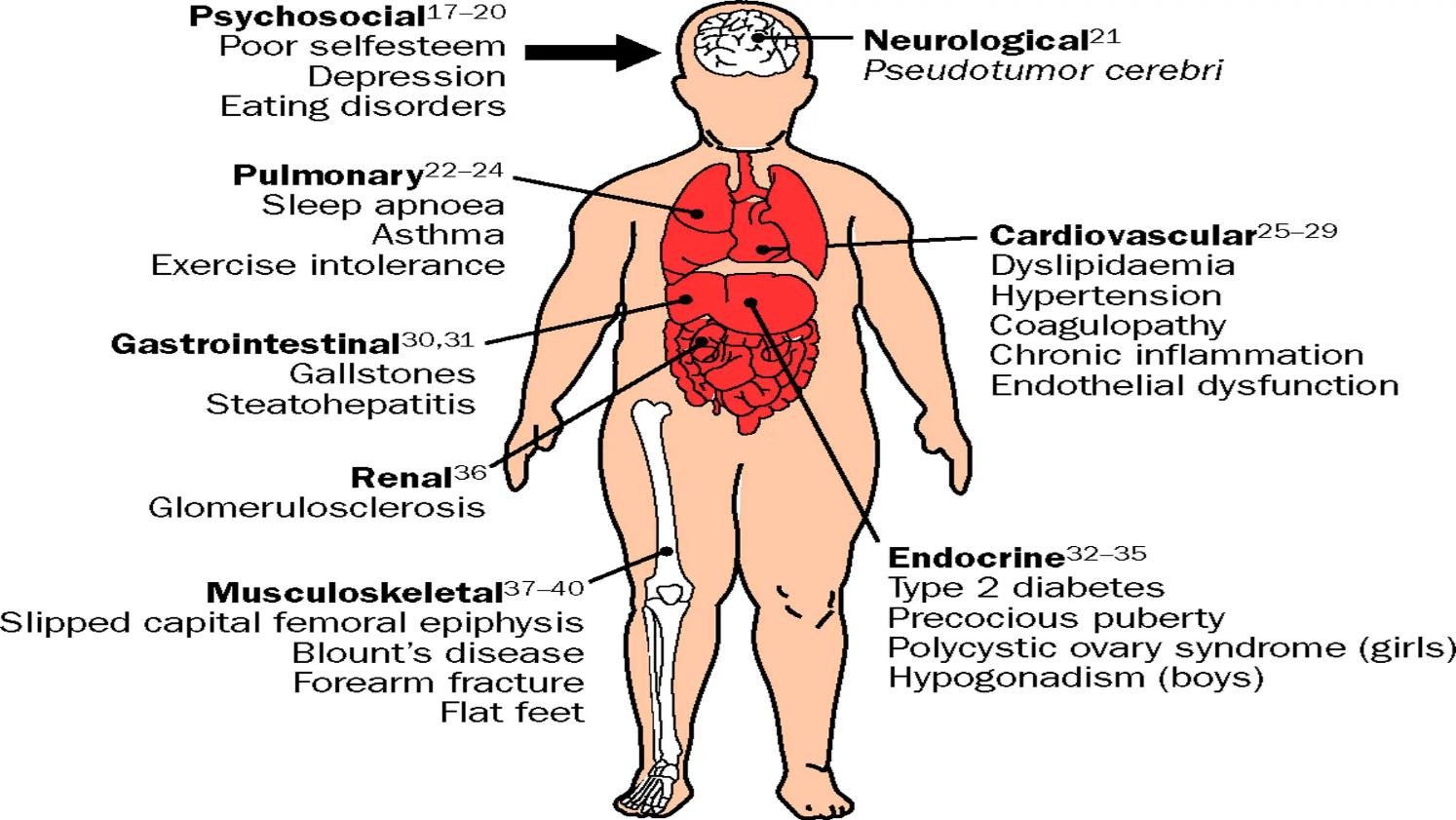Carrying excess weight can put strain on your spine and affect your posture, increasing the likelihood of experiencing back pain.
Obesity is a prevalent issue, impacting roughly 40% of adults in the United States. It can lead to various forms of back pain, such as lower back pain, sciatica, and degenerative disk issues.
Excess weight places additional stress on the spine, potentially harming the intervertebral disks. Furthermore, carrying extra weight in the abdomen and chest can negatively influence posture, which is often a contributing factor to back pain.
Understanding the link between back pain and obesity:
While not everyone with obesity experiences back pain, the two are frequently associated. Obesity may be a significant factor in developing back pain and can exacerbate pre-existing conditions.
A substantial study from 2017 indicated a connection between obesity and issues like lower back pain and degenerative disk problems. Researchers noted that while obesity could predict future lower back issues, they could not definitively establish a direct causal link between obesity and back pain.
Several theories explain why individuals with obesity are more prone to back pain:
Altered posture: Excess weight around the abdomen can lead to poor posture. This may cause the pelvis and lower back to tilt forward, disrupting the spine’s natural curvature. Such changes can place additional strain on spinal disks and nerves, resulting in issues like spinal compression, disk degeneration, and pinched nerves.
Disk compression: Carrying extra weight can elevate pressure on the spinal joints (vertebrae). Over time, this added stress may cause the cushioning disks between the vertebrae to thin or bulge, leading to chronic pain and nerve compression.
Inflammation: Obesity is associated with chronic, low-grade inflammation throughout the body. This inflammation can increase the risk of developing chronic pain conditions.
Common types of back pain in people with obesity:
The spine consists of four main regions, listed from top to bottom:
- Cervical spine: Neck area
- Thoracic spine: Upper and middle back
- Lumbar spine: Lower back
- Sacrum and coccyx: Posterior pelvic wall and tailbone
Back pain can occur in any of these regions, but individuals with obesity may be particularly susceptible to lower back pain.
Lower back pain:
Various conditions and injuries can contribute to lower back pain, and even a poor night’s sleep may lead to temporary discomfort. Chronic and intense lower back pain often stems from more serious issues, such as spinal compression, sciatica, and joint inflammation.
For individuals with obesity, lower back pain can impact areas like the joints, nerves, intervertebral disks, ligaments, tendons, muscles, and vertebrae. Excess weight in the abdomen can cause the spine to curve and arch, increasing pressure on the sacrum and sacroiliac joints at the lower end of the spine.
Disk-related issues:
Intervertebral disks are located between the vertebrae in your back. They act as shock absorbers while walking or running, cushioning the vertebrae and allowing flexibility for bending and twisting. For individuals with obesity, the added weight can exert excessive pressure on these disks. This increased load may lead to disk degeneration, causing the disks to thin over time, or to injuries like herniated disks.
A herniated disk occurs when the inner gel-like material pushes through the outer layer, putting pressure on the nerve roots extending from the spinal cord. This can result in sciatica, a condition characterized by pain that radiates down the leg due to nerve compression from a lower back disk.
Additionally, obesity can contribute to the gradual weakening of one or more disks, a condition known as degenerative disk disease.
Degenerative changes:
Degenerative changes in the spine result from long-term, gradual alterations in its structure and function, with aging being the main contributor.
Osteoarthritis is another factor that can lead to these changes. Excess weight increases pressure on the joints, potentially exacerbating arthritis in the back and other regions, like the knees. Additionally, fat cells release inflammatory chemicals that can intensify arthritis-related pain.
Will losing weight help back pain?
Losing weight can help reduce inflammation and relieve pressure on your spine, potentially decreasing pain levels.
Incorporating exercise into your weight loss plan can also strengthen your core and back muscles, providing better spinal support and contributing to pain relief. However, managing obesity through diet and exercise alone can be challenging, and weight loss may not always be sustained. It’s important to consult a healthcare professional about your weight loss goals, as obesity is a treatable medical condition.
Treatment options may include:
- Weight loss surgery
- Weight loss medications
- Therapy or coaching programs
- Medically supervised diet and exercise plans
Treating back pain with physical therapy:
Physical therapy can be highly effective for alleviating back pain.
Physical therapists employ various techniques, including manual therapy, massage, and electrical stimulation, to reduce inflammation, relax muscles, and ease discomfort.
In addition, a physical therapist will help you perform exercises aimed at strengthening your back and abdominal muscles while enhancing flexibility. These exercises may involve using equipment like resistance bands and engaging in low-impact aerobic activities, such as riding a stationary bike.
Posture and back pain:
Maintaining good posture while sitting and standing is essential for proper spinal alignment and can help alleviate back pain. How you position your body during activities like lifting and bending also impacts your back health.
Staying mindful of your posture requires effort. If you notice yourself slumping, make an effort to sit or stand up straighter. Pulling your shoulder blades back and engaging your core muscles can provide additional support.
Ergonomic aids, such as posture-correcting cushions, can also be beneficial. These tools help maintain proper alignment without requiring constant focus on your posture.





